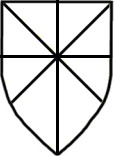- Per fess. Divides the field horizontal into 2 equal parts.
- Barry. A Pattern consisting of an even number of vertical stripes of 2 tinctures one a color and the other a metal. The standard is 6 stripes unless otherwise stated. Devices on barry field are often countercharged.
- A cheif. Usually an ordinary but can be treated as a division (Per cheif). From the top to 1/3 the way down. Because of the way a cheif covers the top of the shield it sometimes is considered a division rather than an ordinary, and hence can be of the same type of tincture as the majority of the field. When used as a division the top color is named first.
- A base. Usually an ordinary but can be treated as a division (Per base). From the bottom to 1/3 the way up. Because of the way a base cover the bottom of the shield it sometimes is considered a division rather than an ordinary, and hence can be of the same type of tincture as the majority of the field. When used as a division the top color is named first.
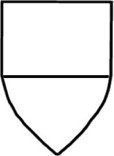
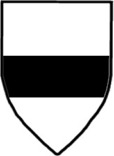
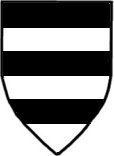
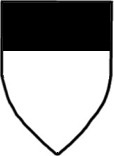

- Per pale. A division. Divides the field vertically into 2 equal parts.
- A pale. An ordinary. A pale is centered along the center line and takes up 1/3 of the field.
- Paly. A Pattern consisting of an even number of horizontal stripes of 2 tinctures one a color and the other a metal. The standard is 6 stripes unless otherwise stated. Devices on a Paly field are often countercharged.
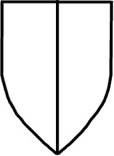
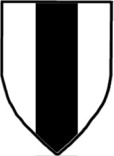
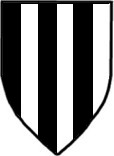
- Per bend. A division. The field is divided into 2 part by a line that starts in the top left corner and crosses the center of the field.
- A bend. An ordinary. Centered along the same diagonal as a bend. The right edge starts 1/3 in from the corner, the left edge 1/3 down from the corner.

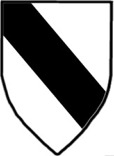
Bends from the top right are sinister
- Per bend sinister. Divided into 2 part by a line that lies at a 45 degree angle from the top edge starting at the top right corner.
- A bend sinister. Centered along the same diagonal as a bend. The left edge starts 1/3 in from the corner, the right edge 1/3 down from the corner.
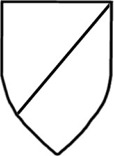

- Per chevron. The top point of the chevron should be above the 1/2 way point but below the 1/3rd. The lines touching the side should be as far below as the point is above.
- A chevron. The width of the chevron should be 1/3 the width of the field.
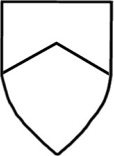
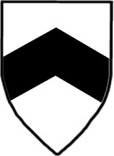
- Per chevron inverted. The top point of the chevron should be below the 1/2 way point but above the 2/3rd from the top. The lines touching the side should be as far below as the point is above.
- A chevron inverted. The width of the chevron should be 1/3 the width of the field.

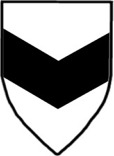
- Per Pall. Division is from the top 2 corners to a spot between the 1/3 and then stright down. Areas are numbered 1-3 starting with the top and going clockwise.
- A pall. Only 1/4 as wide as the field.
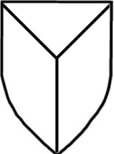
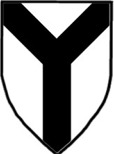
- Per Pall inverted. Division is from the center top to a spot 2/3rds the way down then at a 45 degree angle to either side. Areas are numbered 1-3 starting with the top and going clockwise.
- A pall inverted. Only 1/4 as wide as the field.

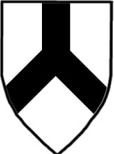
- Per cross. In 4 quarters with horizontal and vertical lines. The are quarters are numbered 1-4 starting withthe top left and proceeding clockwise. Usually the odd numbered quarters are the same tictures as each other and the even ones are a differnt tincture from the odds but the same as each other.
- A cross. A fess intersecting a pale.
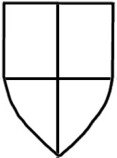
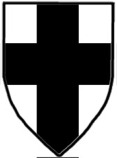
- Per saltire. In 4 quarters with diagonal lines. The are quarters are numbered 1-4 starting with the top center and proceeding clockwise. Usually the odd numbered quarters are the same tictures as each other and the even ones are a differnt tincture from the odds but the same as each other.
- A saltire. A bend and a bend sinister intersecting.
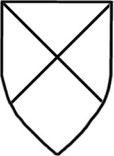
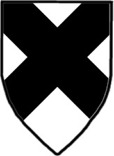
- Per Gyronny. A Division. The division gyronny is created by dividing the field per cross and per saltaire then coloring the 8 sections with alternating tictures. All the lines should pass though a single point near the center of the field.
